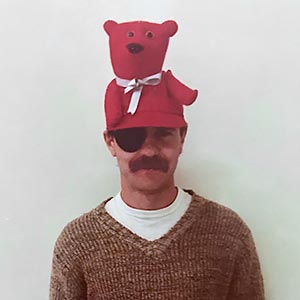.jpg)
Topcon IS-30, 1982
I can’t say whether my fanatical attention to visual detail began with or before I began peering through lenses, since I was introduced to optical instruments at an early age. But certainly, as long as I can remember, the search for visual clarity has driven me to exercise my eyes like a randonneur training his quads for a Paris-Brest-Paris cycling marathon.
I distinctly remember the first time my 20/20 vision showed signs of overuse syndrome. I was standing on the Union Station subway platform in Toronto, after a long day peering through an optical enlarging loupe, into the focussing screen of a large-format Deardorff view camera. The station name, black against white in the subway tile, was a blur.
A good night’s sleep (which I didn’t often indulge in those days) refocussed my eyes and, aside from the occasional relapse, I blundered on for a few more years, sometimes asking my wife to translate highway signs, until I admitted I needed corrective lenses attached to my face full-time.
It wasn’t long until I was experiencing all the hassles I’d seen my bespectacled friends endure — including the dreaded foul-weather fogging curse. I can’t stress (though I did) how unnerving that was when the fogged-up glasses belonged to a rope-mate high on a frozen waterfall in the dead of winter. Maybe, it’s better, I’d console myself, he can’t see the mess we’ve gotten ourselves into!
Even on sunny days — especially on sunny days — I’d see, and still do, people with glasses so smeared with fingerprints and who knows what (eyebrow grease!) that I wonder how the world looks to them. Perhaps it is a dreamy, romantic world that photographers have been known to create with filters or the old standby, a film of petroleum jelly.
It drives me nuts.
.jpg) I have three pairs of glasses: My “everyday” specs, prescription sunglasses, and the “computer glasses” I’m wearing to type this. All have “progressive” lenses. I used to have a fourth pair of cycling glasses that were smashed in a collision.
I have three pairs of glasses: My “everyday” specs, prescription sunglasses, and the “computer glasses” I’m wearing to type this. All have “progressive” lenses. I used to have a fourth pair of cycling glasses that were smashed in a collision.
For the luckily uninitiated, progressive lenses, sometimes called multifocal lenses, have more than one prescription in a sigle pair of glasses. That allows you to do close-up work (like reading a book), middle-distance work (like viewing a computer), or distance viewing, like driving.
Like my camera lenses, all of these must be kept scrupulously clean.
Scrupulously.
Sitting down to watch a movie, for instance, is preceded by a ceremony of spraying and buffing (with three alternating lens wipes) until the lenses are as transparent as possible, depending on the degree of abrasion to the expensive Nikon coatings I insist upon.
Backlit conditions, like computers and TVs and picture windows, create the most difficult challenge. Why doesn’t someone market a dual matte box for glasses? Other than the fact that wearers would look like they were walking around with an antique stereo photo-viewer glued to their face, I think there’d be a huge market.
My most recent everyday glasses have been a big disappointment. The optometrist got the reading portion wrong and the optician positioned the lenses incorrectly. Covid has kept me from correcting that. They’re a real pain in the neck.
Luckily, I have these dedicated computer glasses — that actually haven’t been updated for about 7 years. Nonetheless, they are perfect. The thrift store frames contain two prescriptions — one measured to screen distance, the nearer to the keyboard (‘cause I can’t touch-type).
I have several friends and relations that have freed themselves for the tyranny of specs with laser eye surgery. They swear by its efficacy.
No one is going to fry my cornea. OK? Even though I have corneal degeneration that may eventually require surgery, I’ll pass for now.
I’m sure I’m now paying the price for that time I joined in taunting an English primary school classmate who wore those horn-rimmed National Health glasses (before they were made cool by John Lennon in How I Won the War).
“Four eyes, four eyes!” Little did I know.

photo: Dan Campbell
Technical Notes — Camera: Nikon FM | Lens: Nikon 50mm f/1.8 E | Film Ilford FP4
In the summer of 1982, I spent every spare hour developing the climbing area known as Octopus’s Garden at the Little Smoke Bluffs, near Squamish. Driving in to the bluffs one day, I brushed passed an overhanging tree branch, which rebounded through my open van window, into my eye. In terrible agony through the night, I visited an ophthalmologist the next day. Despite the fact that my focussing eye had received a blow that severely scratched the cornea, I seem to have compensated well enough to focus the photo above — manually, of course.
Update (Aug. 23): By sheer coincidence, a long lost friend just contacted me, sending the image at right, via text message, made by a fellow MEC employee at the time. That’s me, with the eyepatch covering my branch-lacerated eye.














